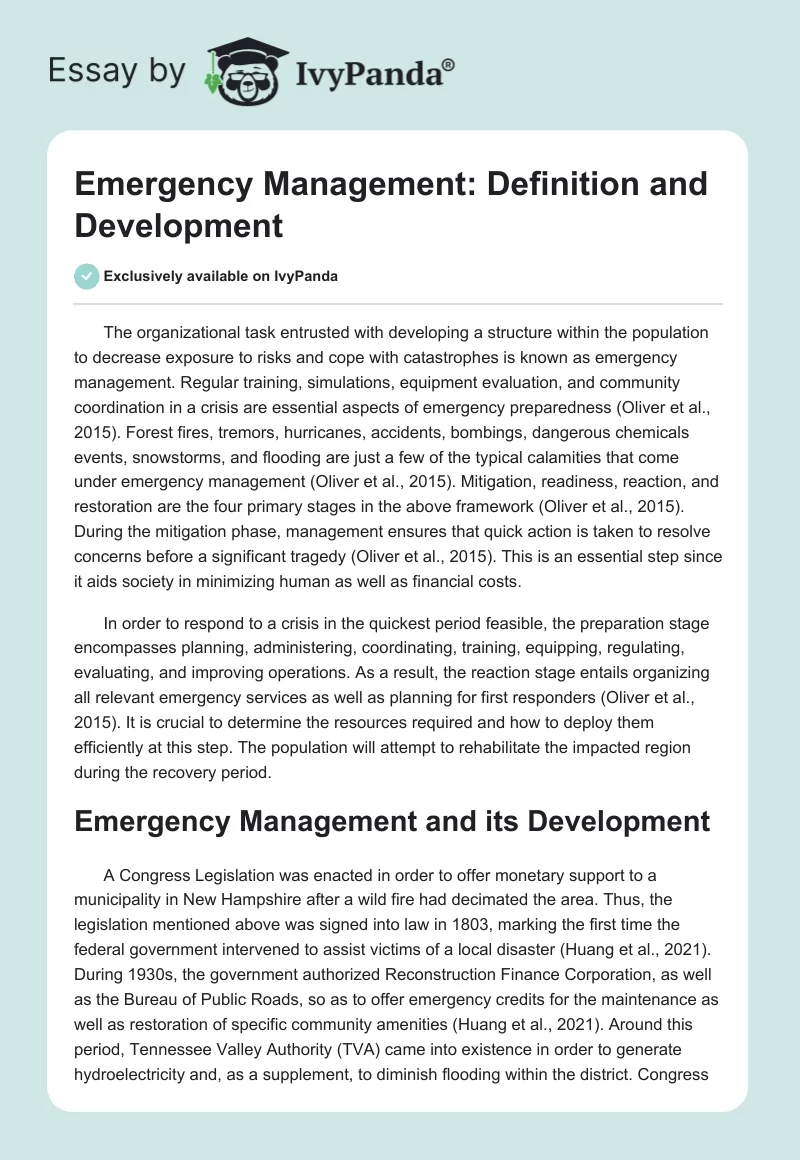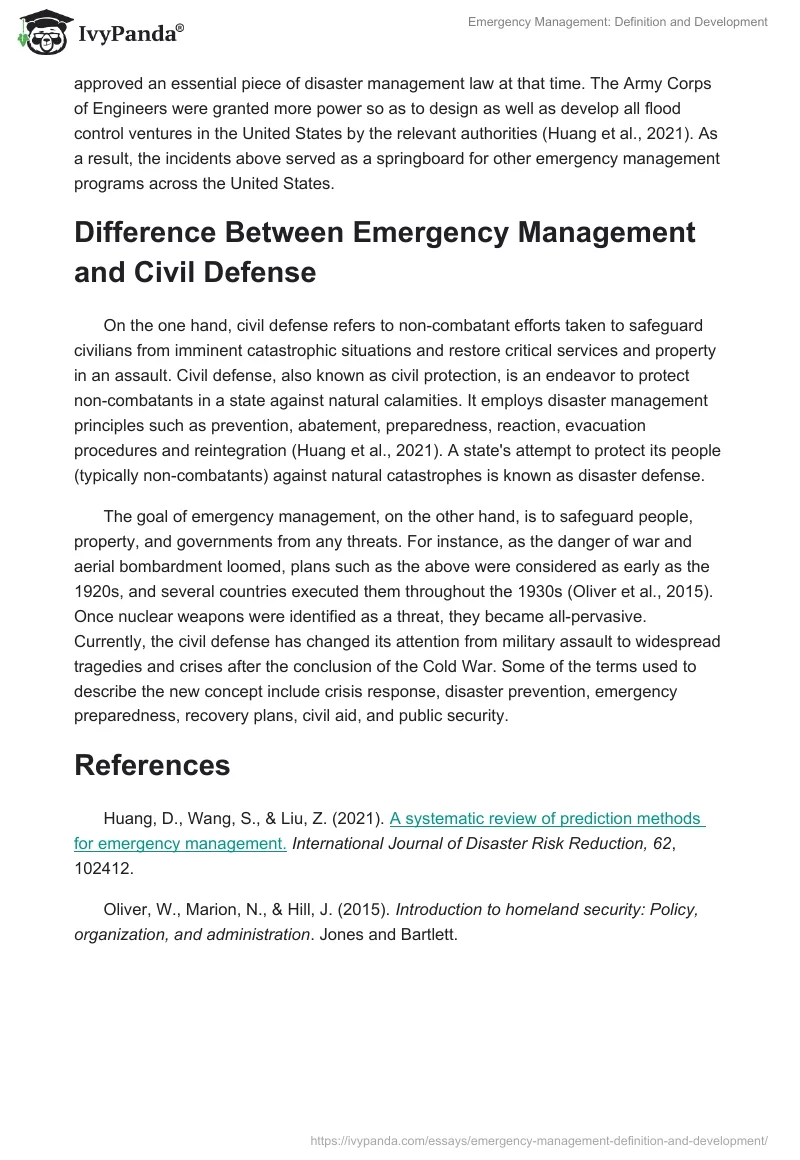The organizational task entrusted with developing a structure within the population to decrease exposure to risks and cope with catastrophes is known as emergency management. Regular training, simulations, equipment evaluation, and community coordination in a crisis are essential aspects of emergency preparedness (Oliver et al., 2015). Forest fires, tremors, hurricanes, accidents, bombings, dangerous chemicals events, snowstorms, and flooding are just a few of the typical calamities that come under emergency management (Oliver et al., 2015). Mitigation, readiness, reaction, and restoration are the four primary stages in the above framework (Oliver et al., 2015). During the mitigation phase, management ensures that quick action is taken to resolve concerns before a significant tragedy (Oliver et al., 2015). This is an essential step since it aids society in minimizing human as well as financial costs.
In order to respond to a crisis in the quickest period feasible, the preparation stage encompasses planning, administering, coordinating, training, equipping, regulating, evaluating, and improving operations. As a result, the reaction stage entails organizing all relevant emergency services as well as planning for first responders (Oliver et al., 2015). It is crucial to determine the resources required and how to deploy them efficiently at this step. The population will attempt to rehabilitate the impacted region during the recovery period.
Emergency Management and its Development
A Congress Legislation was enacted in order to offer monetary support to a municipality in New Hampshire after a wild fire had decimated the area. Thus, the legislation mentioned above was signed into law in 1803, marking the first time the federal government intervened to assist victims of a local disaster (Huang et al., 2021). During 1930s, the government authorized Reconstruction Finance Corporation, as well as the Bureau of Public Roads, so as to offer emergency credits for the maintenance as well as restoration of specific community amenities (Huang et al., 2021). Around this period, Tennessee Valley Authority (TVA) came into existence in order to generate hydroelectricity and, as a supplement, to diminish flooding within the district. Congress approved an essential piece of disaster management law at that time. The Army Corps of Engineers were granted more power so as to design as well as develop all flood control ventures in the United States by the relevant authorities (Huang et al., 2021). As a result, the incidents above served as a springboard for other emergency management programs across the United States.
Difference Between Emergency Management and Civil Defense
On the one hand, civil defense refers to non-combatant efforts taken to safeguard civilians from imminent catastrophic situations and restore critical services and property in an assault. Civil defense, also known as civil protection, is an endeavor to protect non-combatants in a state against natural calamities. It employs disaster management principles such as prevention, abatement, preparedness, reaction, evacuation procedures and reintegration (Huang et al., 2021). A state’s attempt to protect its people (typically non-combatants) against natural catastrophes is known as disaster defense.
The goal of emergency management, on the other hand, is to safeguard people, property, and governments from any threats. For instance, as the danger of war and aerial bombardment loomed, plans such as the above were considered as early as the 1920s, and several countries executed them throughout the 1930s (Oliver et al., 2015). Once nuclear weapons were identified as a threat, they became all-pervasive. Currently, the civil defense has changed its attention from military assault to widespread tragedies and crises after the conclusion of the Cold War. Some of the terms used to describe the new concept include crisis response, disaster prevention, emergency preparedness, recovery plans, civil aid, and public security.
References
Huang, D., Wang, S., & Liu, Z. (2021). A systematic review of prediction methods for emergency management.International Journal of Disaster Risk Reduction, 62, 102412.
Oliver, W., Marion, N., & Hill, J. (2015). Introduction to homeland security: Policy, organization, and administration. Jones and Bartlett.


